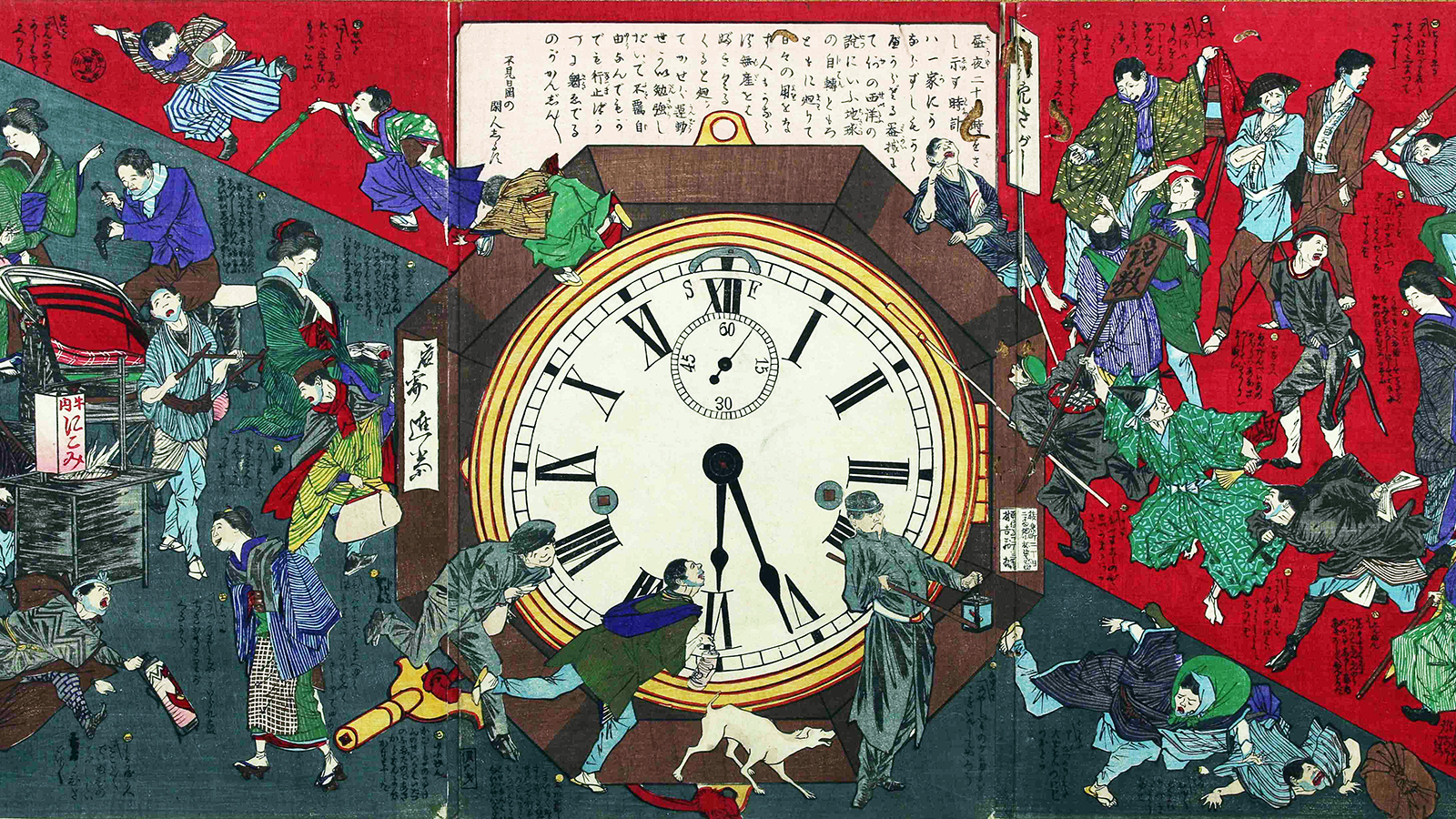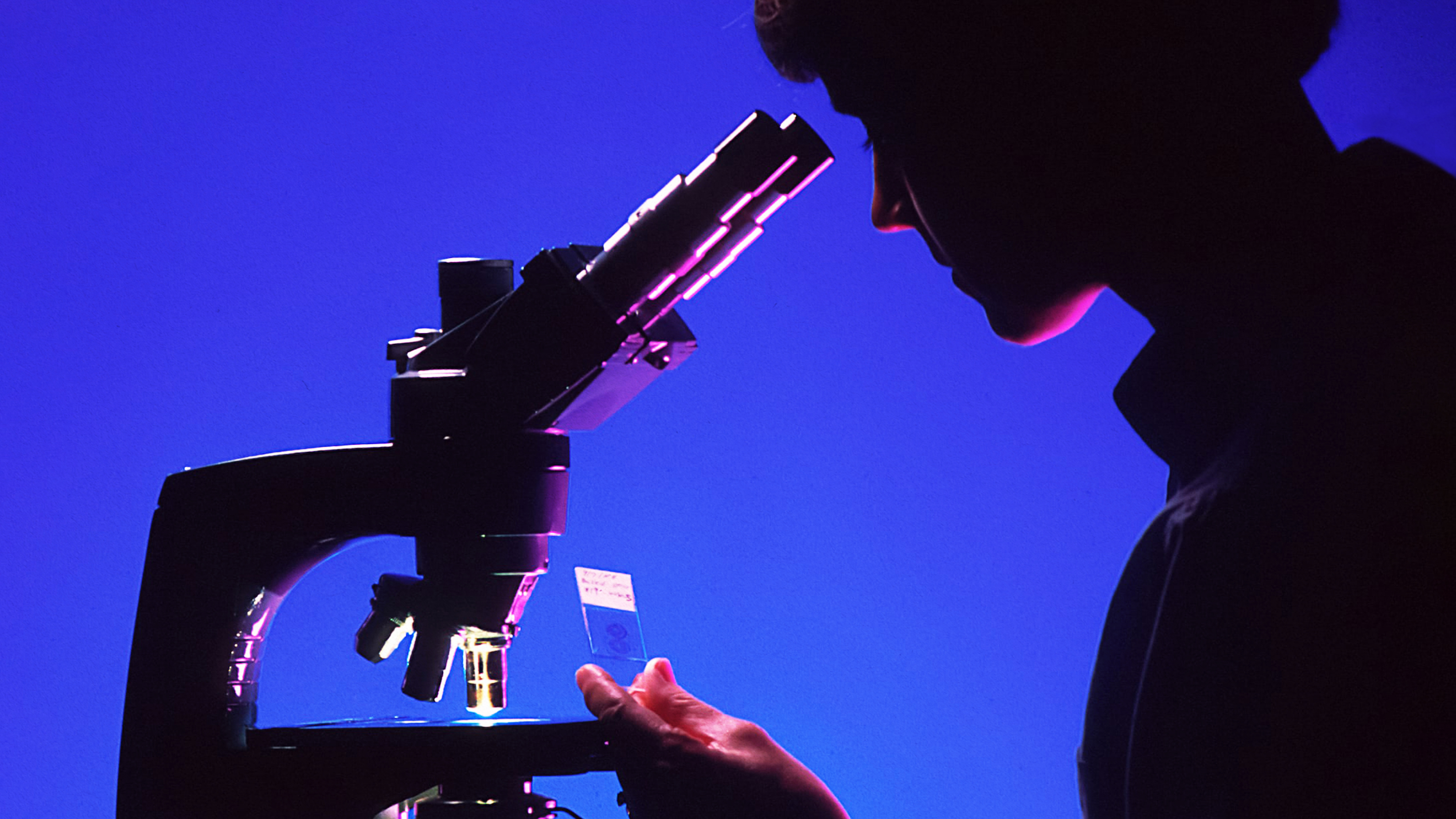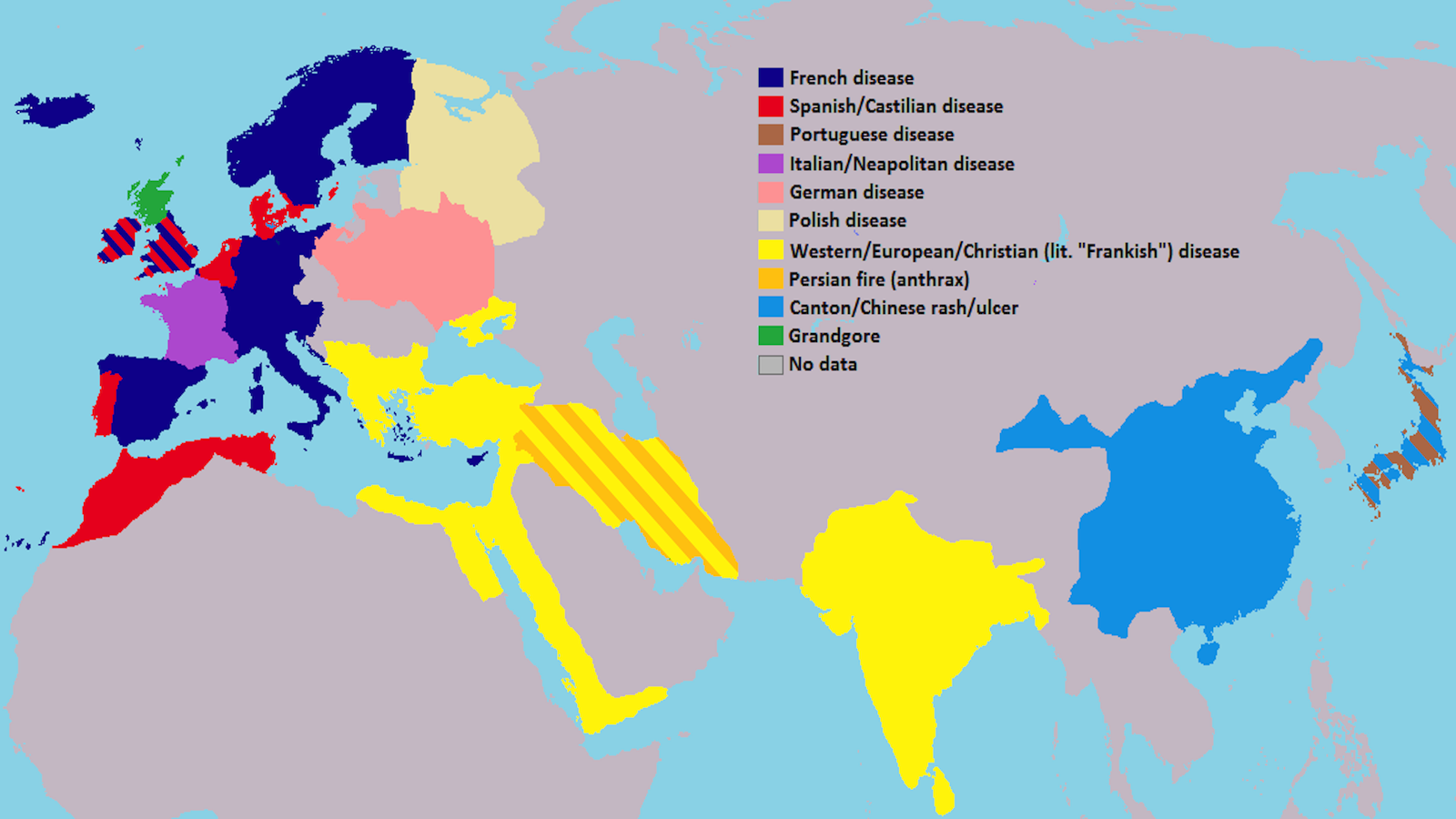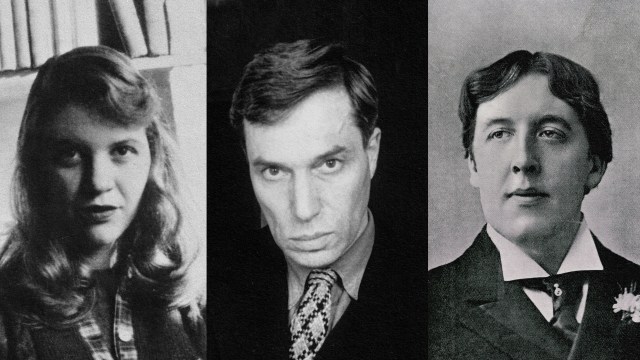The 1957 pandemic your grandparents forgot about
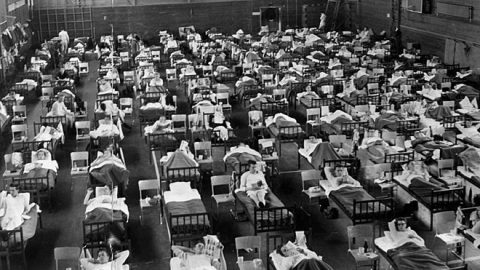
The symptoms came on without warning. “We had dipped out of the dissecting room at St Thomas’s for a mid-morning break and strolled along the Embankment to Lambeth Bridge,” wrote microbiologist T. H. Pennington of a particular day in medical school. “Going there I felt fine. Coming back was terrible because of fever and aching limbs.”
Ed Susman, a newspaper delivery boy in upstate New York, was hit even more suddenly: “I distinctly recall feeling very warm in one of the tenement houses where I had a number of customers. I walked out on the back porch, and I literally felt as if I had been hit by a moving wall. My knees buckled and I fell back against the wall of the building. I truly do not remember how I finished the route.”
A mysterious new respiratory virus was on the move out of China, cutting through a global population with virtually no immunity. But the year wasn’t 2020—it was 1957, 63 years earlier. Before the global H2N2 influenza pandemic wound down, it would kill 116,000 people in the United States (the equivalent of about 232,000 today) and as many as 4 million people around the world.
Millions dead is a catastrophe by any measure. Yet this pandemic has almost entirely vanished from cultural memory. Will anybody in 2083, 63 years later, have heard of COVID-19?
The story begins with eerie familiarity: the discovery of a novel respiratory virus in China in February 1957. The Chinese government failed to promptly alert the international community of their discovery, and the new influenza strain quickly stormed its way across Asia. It wasn’t until April, when Hong Kong, then a British colony, experienced a 250,000-case epidemic that global media began to take notice.
In April and May, the virus arrived at U.S. military bases in Korea and Japan. Outbreaks began stateside by June, first at military camps in Rhode Island, then California. From there, the virus unfurled across the continent.
Ed Susman’s experience was not unusual. The H2N2 flu frequently began with suddenly “wobbly legs and a chill followed by prostration”; sore throat; fever between 102 and 104 degrees; head, chest and backache; and a dry cough—all followed by severe fatigue.
Susman eventually recovered, remembering little other than mostly sleeping through the ordeal. In fact, most patients recovered within four to five days, though some experienced relapse, sometimes worse than before.
When the virus killed, it did so in grisly fashion. Most who died experienced extreme difficulty breathing, skin discoloration from low blood oxygenation, bloody coughing, and bacterial infections that overwhelmed their battered respiratory systems.
Death generally came in less than a week. In fact, two-thirds of those who died succumbed within 48 hours of hospital admission. (At the time, intensive care units and antivirals did not exist, and ventilators were fairly primitive.) One in five didn’t even make it to the hospital in time for what limited help was on offer.
Like the 1918 flu before it, young people were uniquely susceptible to catching this virus. Some older adults might have had immunity from the 1889-90 flu pandemic, which could have been caused by a similar strain. But this resistance to infection was outweighed by H2N2’s deadliness for that age cohort—for those over 65, it was almost 20 times as high.
During the summer of 1957, superspreader events among young people at barracks, camps, and conventions saw infection rates of 30 to 89 percent. Within a few weeks of schools opening early for the year in Tangipahoa Parish, Louisiana, some 60,000 people caught the virus.
In general, few of these initial outbreaks resulted in recorded deaths. This, in combination with the crudity of data reporting at the time, obscured the true effect H2N2 would have on the population, particularly the older and more at-risk. Further public events were approved, and the tone was set for the coming response.
This would prove a fatal mistake. Young people soon returned home from their summer gatherings, spreading H2N2 across the country. When schools opened nationwide in the fall, infection rates ranged from 40 to 60 percent.
Community spread was well under way in the American West by mid-September, with the East Coast getting hit in mid-October. The fall wave was so massive that almost two-thirds of students fell ill. During New York’s fall peak in early October, 29 percent of school attendees were absent at once. In Manhattan, it was 43 percent.
The government did relatively little to mitigate the spread. Schools typically remained open. Large gatherings were, by and large, permitted. Stay-at-home orders were nonexistent. “No efforts were made to quarantine individuals or groups,” wrote one epidemiologist, “and a deliberate decision was made not to cancel or postpone large meetings.”
This wasn’t for lack of insight. Stringent, sometimes restrictive public health measures were a feature of the 1918 pandemic as well as more recent polio outbreaks. Americans had witnessed contact tracing, limitations on public meetings and indoor spaces, mask mandates, and even citywide lockdowns.
But virtually none of these tools were enlisted to slow H2N2. This was in part because it was believed such efforts were “futile” given how quickly and easily the virus was spreading. And also because work on an effective vaccine was underway by spring 1957—and completed by that summer.
Upon seeing reports about H2N2 in Hong Kong, Maurice Hilleman, soon-to-be head of the U.S. vaccine campaign, recalled exclaiming, “My God … This is the pandemic. It’s here!” Within days of receiving samples of the virus, his lab was able to identify the novel H2N2. By May 12, the U.S. Public Health Service was providing vaccine manufacturers with virus cultures. And a vaccine estimated to be between 53 and 60 percent effective was in testing by June. Military recruits began to receive the vaccine in July, and the first doses were administered to the U.S. public in August. About 30 to 40 million doses were ultimately administered in the U.S.
Still, for many it was too little, too late.
This deadly experience seems to have vanished, even beyond the footnotes of collective memory.
People at the time were aware of the pandemic—hearing about its spread, symptoms, precautions, and possible social impacts on the radio, on television, and in the newspaper. According to a September 1957 Gallup poll, 92 percent of U.S. adults knew of H2N2. More than three-quarters knew of the vaccine, and almost two-thirds planned to get it.
One possible explanation for the collective amnesia is its historical context. In recent times before COVID, infectious disease typically didn’t pose much threat in the U.S. In 2014, for example, infectious disease caused about 34 deaths per 100,000 people—about the same amount as chronic lower respiratory diseases like asthma.
The 1950s were different. In that decade, the rate was roughly twice as high, with illnesses like polio still killing thousands each year. And, in living memory, rates of infectious disease death had been astronomical—about 200 per 100,000 people in 1940, 300 in 1930, and almost 1,000 during the 1918 pandemic.
This familiarity with infectious disease death suggests that, though the public may have been initially alarmed at the appearance of a new flu strain, it quickly became clear H2N2 was not a return to 1918, lowering the sustained concern.
That was reflected in news coverage, says Catherine Carstairs, a medical and health historian at the University of Guelph in Canada, who recently worked on a broad study of media of the time. “There were reports when H2N2 originated and arrived,” she says. “But by the New Year there was basically nothing.”
Another element to the pandemic’s omission from history is that, unlike the 1918 flu, which disproportionately killed young people, H2N2’s age curve matched typical patterns of influenza death, which, like COVID, more frequently fells the elderly and infirm.
“As a society, we seem to care a lot less when it’s older people who pass,” Carstairs says. “Compare H2N2 to the historical attention and panic around polio, which mostly impacted children. We tend to mourn much more extensively the loss of people whom we feel it’s ‘not their time.’”
There’s also something almost ordinary about the nature of influenza. It’s not exotic. The symptoms are familiar, not sensational as with Ebola or smallpox. All of us inevitably catch it in some form, and almost all recover. “Novelty tends to stick in people’s minds,” says George Dehner, an environmental historian and author of Influenza: A Century of Science and Public Health Response. Dehner likens it to how people in the 19th century were more alarmed by cholera than tuberculosis, even though tuberculosis had a higher death toll.
Instead of death or illness, it turns out, much of what people remember about pandemics is the disruption to everyday life: the lockdowns, the mask mandates, the social distancing. In 1957-58, there wasn’t much of that.
Perhaps this bodes well for our ability to remember and learn from COVID. Although not necessarily. “It’s a function of human memory that we compartmentalize and shove away unpleasant times,” Dehner says.
And, if past is prologue, it will take a herculean effort to keep the tragedies of COVID in the minds of the public and policymakers to prepare and respond effectively when the next pandemic comes—which it inevitably will.
This article originally appeared on Nautilus, a science and culture magazine for curious readers. Sign up for the Nautilus newsletter.


